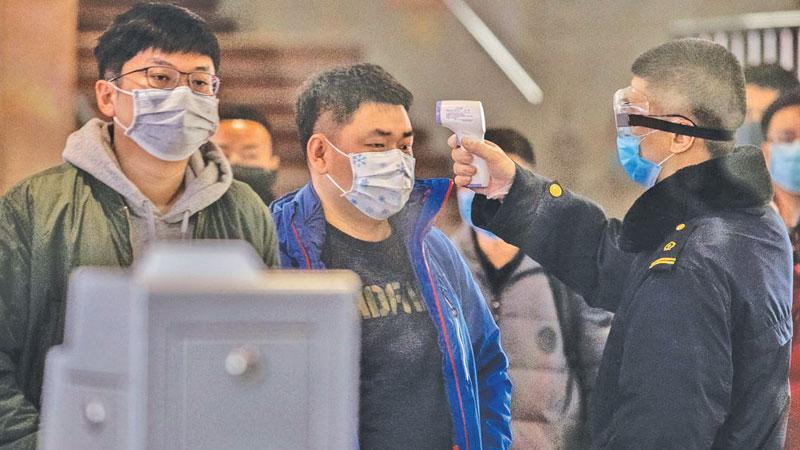

In 2002 and 2003, for example, the aggressive SARS-CoV Coronavirus led to an epidemic in 30 countries. Worldwide, over 8,000 people were infected with the virus, and around 1,000 died. In 2012, the Middle East Respiratory Syndrome Coronavirus (MERS-CoV) was discovered on the Arabian Peninsula.
The epicentre of the virus outbreak in Wuhan has been sealed off by the Chinese authorities. Infrastructure transport systems such as trains and other public conveyance facilities are at a complete standstill in the affected areas in China.
It is quite surprising that the mainstream media fed with regular briefings by the WHO is dramatically reporting the outbreak of the Coronavirus though the numbers are astonishingly low when compared with previous influenza outbreaks in other countries.
The Robert Koch Institute in Germany is a federal government agency and research institute responsible for disease control and prevention. It is situated in Berlin and Wernigerode. As an upper federal agency, it is subordinate to the Federal Ministry of Health.
For the 2018/19 period, no estimate of the excess-mortality could be made, as the necessary data of the Federal Statistical Office were published with a time delay.
However, the estimate for the 2017/18 period (still lacking in the last annual report) has been supplemented: about 25,000 influenza-related deaths exemplify – together with other parameters – the extraordinary severity of the flu epidemic in 2017/18.
Quite surprisingly, no media hype or call for a pandemic warning was issued by the WHO or any other related health organisation in the face of 25,000 confirmed deaths in Germany alone. How is it that a real media hype is now ongoing on the lines of a tsunami warning which places millions of lives at risk?
It is interesting to note that health experts issued an ominous warning about a coronavirus pandemic three months ago. Their simulation showed it could kill 65 million people, according to a report in ‘Business Insider’.
The World Economic Forum in cooperation with the Bill and Melinda Gates Foundation tested the Coronavirus in the John Hopkins Centre three months ago. As a result of this simulation, 65 million estimated fatal human cases could be expected if the outbreak couldn’t be stopped at the initial phases or adequate vaccination programs were not implemented.
A coalition backed by Bill Gates is funding biotechs to develop vaccines for the deadly Wuhan coronavirus.
The H1N1 outbreak in recent years and the prominent warning of the WHO of an epidemic with pandemic dimensions with millions of possible deaths led to the introduction of a vaccine under the name Tamiflu, an antiviral medication that can prevent and treat symptoms of the flu.
In the US, the current average retail price of ten 75 mg capsules (or one pack) of Tamiflu is around 185,00 USD. It consists of monosodium citrate, saccharin sodium, sodium benzoate, sorbitol, titanium dioxide and a tutti frutti flavoring to make the oral medication attractive. The production costs of Tamiflu, according to experts, is a mere fraction of the sale price.
The Bill and Melinda Gates Foundation predicted the outbreak of the coronavirus, estimated the fatal costs of lives and are now instrumentally working on the development of a suitable vaccine. How has it been impacting the economy? Concerns over the virus have sent Asian stockmarkets tumbling.
The memory of the economic damage caused by the SARS epidemic between 2002 and 2003 is still fresh, with people concerned about the impact on the tourism and travel industries as well as limitations on consumer spending.
Sadly for Sri Lanka, the impact on the booming new development projects might also take its toll, especially with warnings to the public to avoid shopping malls, where people gather in large numbers.
The comparably very low number of casualties and the relation to normal flu fatalities such as the one in 2017/18 with 25,000 recorded deaths in Germany alone, might ring alarm bells that the ulterior motives for calling the Coronavirus a pandemic could possibly have its epicentre in economic quarters.
It seems to be now only a matter of time until a relief vaccine is introduced as the world’s saviour again, the way it was done with the H1N1 Tamiflu vaccine, where pharma giants raked in billions of dollars.
The writer is a social scientist based in Sri Lanka
